The Invisible Ray (1936, Black Friday, The Strange Door)
Directed by: Arthur Lubin, Lambert Hillyer
Written by: Curt Siodmak, Douglas Hodges, Eric Taylor, Howard Higgin, John Colton
Starring: Anne Nagel, Bela Lugosi, Boris Karloff, Cherles Laughton, Francis Drake, Jerry Sackheim, Richard Stapley, Stanley Ridges
MANIACAL MAYHEM [THE INVISIBLE RAY, BLACK FRIDAY, THE STRANGE DOOR]
AVAILABLE ON BLU-RAY: 17TH SEPTEMBER, from EUREKA ENTERTAINMENT
Eureka bring us more ‘B’ fun with Boris Karloff – or should that be just KARLOFF as that’s how he was billed for a while? In two of the films he’s a mad scientist again. Will he never learn?

DISC ONE
THE INVISIBLE RAY [1936]
RUNNING TIME: 89 mins

In his observatory, scientist Janos Rukh convinces Dr Benet, Dr Stephens and his wife Arabella, plus Arabella’s nephew Ronald Drake, that an ancient meteorite which contains a powerful form of radium exists in Nigeria. The expedition is a success, but then Rukh exposes himself to the highly toxic radiation, causing him to glow in the dark and to make his mere touch instantaneously deadly to any living thing. An antidote devised by Dr. Benet saves him from death by radiation poisoning, bur Rukh needs to keep on taking it. He’s getting increasingly edgy and explodes when a sample has been taken away to Paris. He’s going to get even more angry when he finds out that his wife Diana and Ronald are in love….
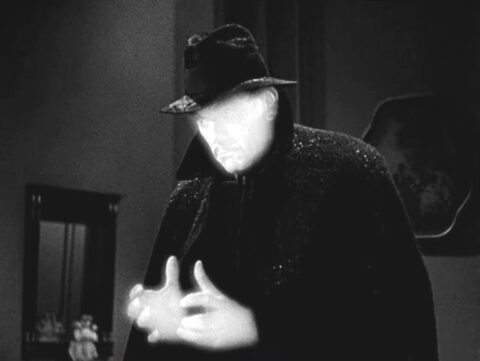
I’d seen The Invisible Ray once before some time ago, and recall being rather disappointed in it back then, because this was a film which seemed to take its time to get through things which most others would have rushed past, then failed to make the most of what I wanted to see more than anything else; a glowing, luminous Karloff on the rampage wrecking vengeance, with some major events even taking place offscreen! But then for much of its length this tale is sci-fi rather than horror, and, as a much more mature [well, at least in age] film watcher now, it’s rather nice to see a plot of this nature given time to really breath, its breadth coming across now as a full story where we can properly follow arcs, even if a few passages could still certainly do with being tightened. John Colson’s script places a strong emphasis on characterisation, and not just of Karloff’s character either. Of course the man himself really comes through with a fairly nuanced performance, but there’s also a surprising focus on his unfaithful [we presume] wife Diana who’s somebody that we don’t dislike, even care about; normally she’d be given short shrift and not be somebody that’s sympathetic, which would make our psychological response far simpler. As for the other most prominent scientist in the story Dr Benet, Lugosi is again given a role where he’s not on screen very much, his standing clearly not very high at Universal by now, though, perhaps surprisingly, he pulls off rather well one of his most “normal ” roles.
Opening text concludes with, “Tomorrow these theories may startle the universe as a fact”, and the fact that this isn’t great English might be enough for some to mock, but that’s nothing compared what happens in the lengthy opening sequence set in Rukh’s Gothic castle, which seems as if it’s going to feature majorly in the picture seeing how atmospheric the opening minutes were. Diana is missing Rukh who spends most of his time in his laboratory/observatory, while Rukh’s mother tells of how she was blinded when, “Janos first caught his ray from Andromeda”. She’s clearly worried about Rukh, there being, “Some secrets that we’re not meant to probe”, and he already seeming to be in the slight grip of some mania. Now comes a really ludicrous bit where Rukh demonstrates to his visitors his TV-like device which, following on from the idea that, light from distant stars originated millions of years ago, is able to show views of some kind of traveling through space before turning round to witness a meteorite spinning towards Earth [which looks like the Universal globe] and hitting Africa – though not Nigeria from the looks of it. His doubting audience are now convinced that Rukh has made a terrific breakthrough [never underestimate how good visual aids can be in presentations], so they invite him to join their expedition to Nigeria, even though Mother, always looking out for her son and knowing him better than anyone else, warns him not to go. A cut to a magazine documenting the journey segues to Nigeria where Benet has just used “Astro chemistry controlled by radium forces from the son” to cure a native boy. “This little creature is going to live” cries Benet in a real dialogue groaner, while the natives are either big cowards or blind obeyers, though of course one just needs to remember that this was the norm back in 1935.
Rukh finds what he’s looking for, and then spends much time away from camp, leaving Diana and Ronald to fall in love, though for a while they deliberately avoid each other. All this takes some time, probably too much time for some, though the stronger focus on character relationships is pulled off quite well. The most important scene regarding the relationship between Rukh and Diana occurs just after she’s witnessed him glowing mysteriously; he tells her to go away, then he also walks off and passes her sobbing. He hesitates for a moment before moving right on past her. This is the turning point, he now has no interest or time for her, and doesn’t even seem bothered when he finds out about Diana and Roland, easily granting her a divorce, though of course we know that his mind is beginning to slip, even if it’s understandable that he’s furious when Benet and Stephens take a sample of what is now called Radium X to Paris. Back in Carpathia which is where we finally find out where his castle is situated, he cures his mum’s blindness with the substance, then goes on to Paris where he sees that Benet is having great success using Radium X for good purposes. However, it really does seem now that he’s going to be up to no good, and soon the papers are reporting of mysterious deaths and a possible curse on those who went to Nigeria, much like the one of Tutankhamun. As well as being far shorter than one would expect, this section also downplays the murder aspect, not even showing a proper preamble to the killings, though we do get the nice touch of Rukh seeing six statues atop a cathedral and them dissolving before his eyes into himself and his six potential victims, before a statue disappearing after each murder. It makes little sense to us but then again Rukh is insane by now.
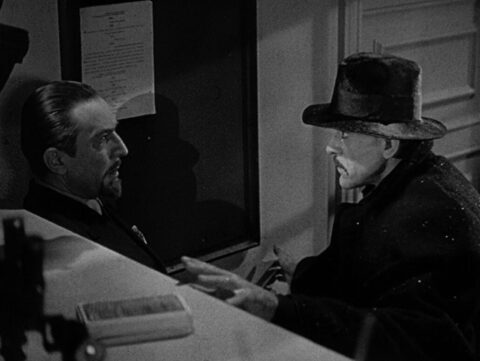
Indeed one can ask a few other questions, such as how on earth can Benet concoct an antidote for Radium X over just one night, as well as chuckle at early scientific thought. The curing part of ordinary radium is really the selective killing of diseased tissue, but this new alien element can be put into a box and set to either do good or bad things. Douglas Hodge’s, John Colton’s and Howard Higgins’s script even has what could be the first cinematic version of the old theory by some that the last thing that somebody sees before they die is imprinted. Seeing now Benet is a brilliant scientist if not a very scrupulous one, he’s just the kind of guy who would have a machine that can visually this imprint and therefore make a discovery which moves the plot forward, and by now it certainly does, even if before it certainly takes its time. While this does help with our involvement and our understanding, we could have done with an extra scene or too between Rukh and his mother, the most important woman in Rukh’s life, especially as it’s in some ways the emotional centre of the story [despite Violet Kemble Cooper only being one year older than Karloff], with its finale appropriately finishing with it. She’s rather controlling, but isn’t genuinely evil like you might expect and does genuinely want what’s best for her son. If he’d listened to her in the first place he’d probably have been alright. The glowing effects still look good enough, though of course digital restoring means that a shot where the glow is about to come is grainy because it’s been back projected. The melting of solid rock is an exceptionally good effect, which begs the question; why don’t we see any of the statues melting? The space sequence is pretty elaborate for the period. The budget for this one seems to have been slightly higher than your usual Universal horror, so did we really need to see shots of gear from Frankenstein’s laboratory in the observatory sequence?
Director Lambert Hillyer, who’d just replaced another director on Dracula’s Daughter and does the same duties here, concentrates on performances which really works out with regard to both Karloff and Lugosi, if not so much Mad Love‘s Francis Drake [replacing Gloria Stuart] as Diana, who sometimes seems to be looking rather more puzzled than she ought despite what her character is going through, and Frank Lawton. Lugosi is admirably restrained, coming across as suave in quite a subtle way. It comes as a surprise that his character doesn’t chase after Diana; in fact Diana is unusually never in peril at all until the very end. He has a few good scenes with Karlof, beginning with the exchange; “We’ve never seen eye to eye”, ” That’s because I’ve always looked two hundred years ahead of your theories”. Their final scene together though is disappointingly short and muted considering what’s actually going on in it. Also a bit of a let down is Franz Waxman’s music score, especially after his incredible effort on Bride Of Frankenstein just before. The most prominent theme is a love one for Ronald and Diana; elsewhere there’s much drama but none of the invention of the former score. There’s also an awkward musical edit where native drums are suddenly cut into by that love theme, though then again the visual editing is iffy too; it seems as if the first part of a love scene was cut out. Overall The Invisible Ray is quite offbeat in its relative lack of interest in suspense and horror, but should still be pretty rewarding as long as you have an idea of what you’re getting and therefore shouldn’t be disappointed in not getting lots of thrills.
Rating: 









SPECIAL FEATURES
Brand new audio commentary track with author Stephen Jones and author / critic Kim Newman
As usual, Eureka offer different special features to North America’s Shout Factory which offered a different commentary and part of a documentary that was spread across three discs. This track is one of the best that Jones and Newman have done, offering interesting information and intelligent insight at every moment while remaining fairly light. Jones sees this film as being an unofficial adaptation of H. P. Lovecraft’s The Color Out Of Space, while Newman tells us that the Lugosi-starring serial The Phantom Creeps used not just footage from this but unused footage. There’s also some really insightful discussion about Karloff and Lugosi; odd how typecasting worked for Karloff’s career but not Lugosi’s. If anything more fun than the film, this commentary is essential listening.
Stills Gallery
Trailers
BLACK FRIDAY [1940]
RUNNING TIME: 72 mins

Kindly old George Kingsley, professor of literature, is about to leaves for a new post in New York, but is smashed into a wall by a car belonging to gangster boss Red Cannon during a shootout on the road. Fortunately though, Kingsley is friends with the gifted Dr. Ernest Sovac who performs an emergency brain transplant. However, the brain he’s plopped into Kingsley’s cranium is that of Cannon. Then Sovac hears that Cannon has $500.000 in loot stashed somewhere in the city, so hr decides to take Kingsley around Cannon’s old haunts to rejig his memory. This doesn’t turn out to be the best of decisions when Kingsley starts to behave far more like Cannon than Sovac wishes….
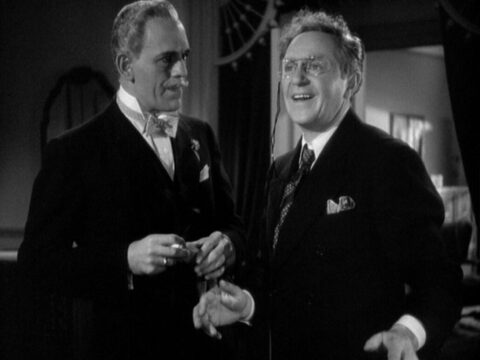
I suppose the first thing I ought to say about this one is that, even though this is supposedly another Karloff/Lugosi starrer, not just do the two share no scenes together at all, but Lugosi is barely in it until the final reel where his character does come to the fore, which begs the question; why didn’t Lugosi play Sovac [even the name sounds appropriate for a Lugosi character] and Karloff Kinsley? Well actually that the was original idea until Karloff curiously felt that he couldn’t play the semi-dual role and was therefore given the part of Sovac instead, while Lugosi, his stock really having fallen with Universal despite recently giving one of his very best performances as Ygor in Son Of Frankenstein, was demoted to the role of mob boss Eric Marney, the part of Kingsley given to Stanley Ridges. No, not a well known actor these days, and I don’t think he ever did any other horror film, but he’s actually very good as Kingsley, or should that be Kingsley and Red Cannon? The exact nature of his transformation is rather vague and there’s much that makes little sense, yet Black Friday rattles along in terrific ‘B’ fashion, full of action and incident as it combines horror and science fiction with the gangster movie. It’s probably more typical of a Karloff and/or Lugosi feature than The Invisible Ray, though it lacks that film’s heart. Here, there are certainly opportunities for an emotional centre but they’re glossed over – and to be honest that works okay for this particular product, which, unlike the earlier film, isn’t coy about showing the audience what it wants to see.
The titles take place in front of a large FRIDAY THE 13TH sign, which was actually the original title for this film. The first of several newspaper headlines inform us that Sovac is going to the electric chair and won’t talk. However, just before he’s taken into the execution room, the group is met by members of the press, and Sovac gives one of them his diary because the newspaper this guy belongs to was the only one that was fair to him. He begins to read as Sovac is about to be killed, and the film proper begins. This sort of framing device can work and comes off okay here, though of course it tells us exactly what Sovac’s fate will be. We meet Kingsley, the archetypal lovable teacher adored by his students. He’s got a new post in the big city, so his friend Sovac drives him to the train station with his daughter Jean and Kingsley’s wife Margaret in the back. Typical of the film’s economy is that the script by Curt Siodmak and Eric Taylor doesn’t give us any chance to get a sense of what Kovac, Jean and Margaret are like before BAM and things kick off as a car smacks right into Kingsley. Kovac finds himself in the back of an ambulance with the dying Kingsley and Cannon, whose spine is broken and offers Kovac money if he saves him. Well, Kovac soon proves himself to be an incredibly brilliant scientist. He seems to be able to not just transplant a brain all by himself, but does it with no one at the hospital knowing about it. What’s more, there aren’t even any scars on Kingsley, and he also maintains his full head of hair. Soon after this, two detectives show up enquiring about money, then Kovac reads in the paper about some cash stacked somewhere in New York by Cannon, so he visits the Kingsley household where Margaret tells him that her husband has been acting strange. Immediately cottoning on, he proceeds to take Kingsley to a New York hotel where Cannon used to stay [Kovac sure is a good guesser].
Now Kingsley is supposed to be a brilliant man, and I suppose he is, but even you or I would surely be able to see that his plan of bringing back enough of Cannon just to tell him the location of this money is doomed to failure. But then the lure of dough is often all-consuming, though Kovac wants the money for a good purpose, to build him a state of the art laboratory and equipment. Kingsley is soon remembering stuff from the point of view of Cannon, and even visits a nightclub where Cannon’s old squeeze Sunny Rogers is. “Who is she? I seem to know her. Could she be one of my students”? While Kingsley later sleeps, Kovac seems to semi-hypnotise him to reveal the money but also to take revenge on the hoods who try to killed him, which is beyond stupid. I guess that Kovac was confident that he could make the Kingsley personality take over for good before things got out of hand, but surely he must have seen a horror movie like this before? In any case, the Cannon side takes over too much and soon he really does begin to commit revenge, not caring if he kills anybody else who get in his way, the body count being quite high. Marney, the guy who’s taken over Cannon’s position, is understandably confused; Cannon seems to be back from the grave, yet he doesn’t look like Cannon. Things do get pretty suspenseful as Marney and Kingsley are heading for a clash with Sunny, who might not be as honest as she seems, maybe caught in the middle, after which Kingsley really does seem to think that everything will be alright now and Kingsley can go back to teaching.
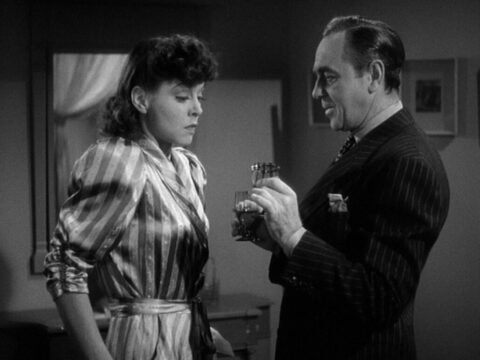
I must reiterate, Black Friday is great fun, yet it’s often confused, especially with regard to its central conceit. Okay, Kingsely awakes with Cannon’s brain, which causes Cannon’s personality to sometimes show itself, though he doesn’t physically change at all. However, nearly half way through, when Kovac sort of hypnotises him, we’re given the impression that he transforms facially. It’s a very well done scene, cleverly avoiding special effects, with Kingsley’s glasses falling from his eyes as he leans forward with his hands clutching his head. With the bottom part of her face very darkened, the hands remain on the face and there’s a dissolve which is really hard to see unless you replay the scene several times [well, on my screen anyway, it might be different if you possess a really large one], before the hands come off and Kingsley’s face now looks much younger than it was before, in a sort of forerunner to The Two Faces Of Dr Jekyll. At first it seems as if we’re suppose to think that Kingsley now resembles Cannon even though he’s not much different to us, but when nobody recognises him should we realise that he is actually just a younger version of Kingsley, which is a bit disappointing and not at all explained? but then again very little is, taking away from us the pleasure of hearing a bonkers psuedo-scientific explanation. Of course the idea of cranium-bouncing brains changing personalities soon became very popular, with Siodmak who was clearly trying out ideas here, himself penning the novel Donovan’s Brain, which was then filmed three times, as well as other screenplays with the theme. Here we never even get straight exactly why his transformations take place. Police sirens bring out the brutal Cannon on one occasion, but other identity switches seem to happen to the convenience of the plot.
Lubin, soon to do a rather mixed job om Universal’s remake of The Phantom Of The Opera, directs fairly mechanically, but is aided by good noir-ish cinematography from Elwood Bredell, his vivid use of blacks helping greatly during the scenes of beating and strangulation where we’re obviously not expecting to see very much anyway. Guns are probably used a bit more, and there’s also a fight and a rooftop chase which employs a few mismatching shots from an earlier film. One memorable moment is when Kingsley, in the place where he should be most happy, loses it and sees the ghosts of the people he’s killed. But we don’t get much of a sense of the relationship between him and Margaret; surely we could have seen him go a bit funny in front of her instead of just hearing about it? The latter is ushered out of a hotel by Covak when she comes to visit her, symbolic of how the script treats her, and, while we do get an important scene between Kovak and Jean at the end, it doesn’t carry much emotion with it because we barely got to know her before. Karloff is good if not great; it’s a totally professional performance and he seems to be enjoying himself, but does provide much nuance this time around. Lugosi is okay but looks a bit unconfortable until near the end where he’s allowed to be menacing and is given a rather bizarre death. Murray Alper as a bell hop who remembers a secret knock for Cannon but is told by Kinglsey not to use it, and John Kelly as a taxidriver, provide good and bad comic relief respectively. Hans J. Salter’s score is typically barnstorming, and some of it was reused in later films; that stalking music heard in the mummy films was first heard here. Black Friday probably won’t leave a lasting impression like The Invisible Ray, but its brief running time grips and excites [kids would probably enjoy this if they’re not opposed to black and white] even when one gets the impression that the script was dashed off in a few hours.
Rating: 









Brand new audio commentary track with Kevin Lyons and Jonathan Rigby
Replacing Constantine Nasr on the Shout Factory release, Lyons and Rigby rattle off the information right from the start, identifying the film some shots in the gas chamber came from one and spotting a misquoted poem line by Kingsley. We hear about the more horrific original script as well as the changes made to accommodate the new casting, plus some bonkers publicity about Lugosi being hypnotised to act better [!]. We also hear that Anna Nagel married a man who killed himself with the same rifle that his first wife used to kill herself six months before! Rigby thinks that Karloff’s refusal to play the dual role was actually down to him “not being arsed”. Informative and lively – but that’s just what we’ve come to expect from this duo.
Stills Gallery
Trailers
DISC TWO
THE STRANGE DOOR [1951]
RUNNING TIME: 81 mins

Denis bs Beaulieu is a heavy drinking, gambling cad only interested in the meaningless pursuit of pleasure. Therefore he’s perfect, in the eyes of Sire Alain de Maletroit who observes him carousing and fighting in an inn before shooting a man with a gun placed in his reach by one of Alain’s men. Fleeing the police, Alain finds himself trapped in Denis’s chateau and being forced to marry Denis’s niece Blanche, who hardly takes to the rogue, while Alain isn’t too happy about this either. Unbeknownst to Blanche, her uncle and his brother Edmond is imprisoned in the house’s dungeon, fiegning madness to survive, while servant Voltan may be getting up to some plotting of his own….
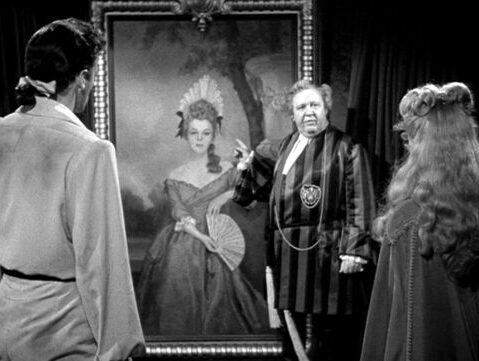
On the audio commentary for 1952’s The Black Castle in Eureka’s Karloff set, Kim Newman and Alan Jones mentioned The Strange Door very often, really making me want to see it. Similarly scripted by Jerry Sackheim in what was a kind of half-hearted attempt by Universal to revive the Gothic horror film combined with the period thriller before concentrating on horror of the science fictio kind, it is, as our two experts say, a sort of companion piece to the earlier film. Both feature a young man trapped in a castle where the owner is pure evil, there’s a tormented lady to romance, and Karloff plays a seemingly small part which becomes increasingly important and eventually crucial to the plot. It’s hard to say which of the two films is better; The Black Castle might be pacier but The Strange Door has a more interesting hero, even if Sackheim seems more fascinated in the villains, who are better fleshed out, in both films. One thing’s for sure though; this film has the better main baddie. When you get somebody like Charles Laughton to play a role like Alain de Maletroit, you have every right to expect ham of the finest quality, and the man certainly delivers, quite wonderful as a bad guy who absolutely loves being a bad guy, aided by the fact that Sackheim gives him all the best lines, though even simple stuff like “I suggest you stay in the ooooold barracks” is said by Laughton with so much lip-smacking relish, while stuff like “I’m in the mood for relaxation, lets visit the dungeon” and “There are many things I can do, but I’m afraid you’ll find them rather disagreeable” almost seem to have been written for him.
The first shot is a gloriously atmospheric one of a carriage traveling down a pebbles street. Out steps Alain, already looking as nasty as you can get. He joins two others inside an inn. “Which of these fine fellows is it”? he asks. “Over there sir, the one over there with the inquisitive fingers”. This of course turns out to be Denis who snogs a woman who then slaps him, then gets involved in a fight with another guy vying for her favours, shoots him with the planted gun, then swings across the room on a chandelier when accused of murder in what is no doubt a typical day for him. Chased by the police who are on horseback, the driver of his carriage refuses to take him any further. He stumbles towards this partly hidden castle, and finds the front door not just open but locking itself after he’s gone in. It’s all rather like Jonathan Harker [or Renfield in Universal’s 1930 version] in Castle Dracula, which was no doubt intended. His host right away tells him what he has to do, but Denis prefers to choose his own women. However, he can’t escape, and we actually think that Denis is going to wound him with a fire brand, advancing towards Alain with evil glee, before placing it in his glass of wine and then pouring it over his head. Alain also hears the sound of a man wailing and sees his host insult and kick his servant Voltan, who only “Came to report that He is restless tonight”. No, we’re clearly not meant to take things all that seriously. “I’ve waited twenty years for this, Helene” says Denis to a large portrait of a woman, and he proceeds to carry out his plan quickly, trying to get his daughter Blanche to marry this totally unsuitable man who will ruin her, even though Blanche already has a suitor named Armand – though for a while all Alain thinks of is escape, trying to bribe another servant with ” a future reward” but with no luck.
The person making the wailing is soon revealed to be Blanche’s father, who makes Denis think that all these years of being in his cell have driven him mad. However, he’s actually remained totally sane, and Voltan is still loyal to him. It’s all intriguing enough, and even surprising when Alain and Blanche begin to like each other, despite Alain grabbing her and planting a smacker on her as soon as the two meet. You’d probably expect Armand to soon become a major character and Blanche to not take to Alain at all, but Armand never shows up and Blanche is soon not thinking of him much at all. We hear that a maid and a dog who both belonged to Blanche disappeared and that Blanche suspects her uncle even if she can’t prove it. As for Voltan, he twice tries to stab Alain for reasons I’m not entirely clear on, though we do eventually find out exactly why Denis is doing this, and a pretty good explanation it is as far as these things go, not that we’re given any chance to pity Denis, he’s just so nasty. The film has a bit of trouble building up tension, but, even though it does give us an action-filled final third, it doesn’t quite fulfill a promise it half seems to make earlier on. We learn that this place was once inhabited by Cabrissande, a medieval torturer, which get us thinking of all these elaborate devices, a climax which is maybe like the one in The Raven way back in 1935, but all we get is a room where the walls move to crush anybody inside it. The actual scene is quite exciting though, and Denis is rather squeamish in a nice touch, so I suppose it’s appropriate that we don’t get any pendulums or such like, while the ’50s was generally too squeamish an era for films to delve into this kind of material until its last few years when the horror genre had a major revival.
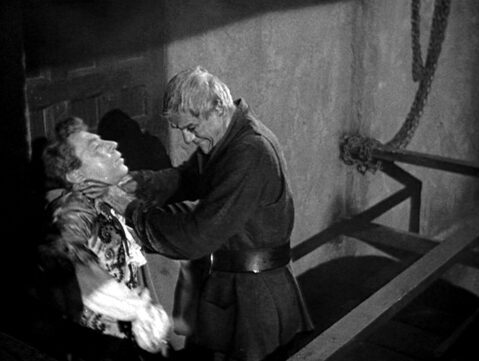
This is the most traditionally Gothic of the films in this set, right from the entrance to the castle which is shrouded in fog; when we revisit it later from the other side, one can spot several props that had turned up in previous Universal horrors. The dungeon set is a striking example of its kind, but more interesting than that is a medieval armoury where perhaps the best of the film’s several fight scenes takes place; the setting is made excellent use of in the scene, while the sixty-four year old Karloff actually looks like he’s getting into the think of it. Karloff and Laughton eventually have a rematch nineteen years after The Old Dark House, though it’s quite a brief one. There’s a genuinely tense moment during an escape scene where Alain and Blanche are passing behind a sleeping guard and he wakes up from his booze-ridden slumber with the other two standing right behind him, totally still and trying not to make a sound. However, some of the best scenes actually involve little action, at least of the physical side. Perhaps Laughton’s best moment is when he’s eating dinner with his two lackies. Talon comes to tell him that Alain attempted to bribe him but with no success. While Talon’s next comment about the bribe not being big enough is pointed, Denis jokingly says that he should reward such loyalty and, calling him a dog, tosses him the bone of meat he’s been biting down on, then says to his men with feigned sadness “I can’t trust anyone, I’m surrounded by rogues”. Laughton swallows up everyone and everything around him, and I was having too much fun watching his performance to be bothered about this in what was my first viewing. More noticeable was how little Sackheim and indeed director Joseph Pevney seem interested in our couple.
Karloff’s performance doesn’t require him to do anything that he hasn’t done many times before, but his character is quite balanced; yes; he’s on the side of good but is always up for some killing. It’s a bit sad watching him though; Chaney and Lugosi were by now playing roles like this because of how their demons were wrecking their careers, but Karloff kept his nose clean and deserved better. Still, his character gets here does get to survive several would-be deaths, which might be why he feels able to milk his actual death scene. Michael Pate, who got a similar but larger role in the follow-up, actually shines just as much as Denis’s number one servant; he offers a lot of interesting looks and a rather amusing manner about him which we can’t pin down. Richard Stapley doesn’t quite convince as the rogue who finds redemption. Sackheim doesn’t really give him much to work with, but it’s hard to understand why Stapley acts rather timid and effeminate when his character is supposed to be dashing and masculine; just look at the way he walks in the mud! Sally Forrest as Blanche is pretty good though. The relationship between Denis and Blanche could have done with being given more time so we can better believe the transformation of both of them but especially that of Blanche, though that would have probably slowed things down too much. Joseph Gershenson is credited as “musical director” rather than composer, so the “score” is a mix of reused cues from the likes of Frank Skinner, Herman Stein and Miklos Rozsa, with Hans J. Salter having the most number of tracks used, mostly it seems from The Wolf Man. Curiously the final ten or so minutes contain no music at all. Of course it all sounds okay in context which is the thing really, but boy were Universal lazy with the scores of many of their films. Nonetheless The Strange Door contains enough to keep us entertained.
Rating: 









Brand new audio commentary track with author Stephen Jones and author / critic Kim Newman
We rejoin the duo, replacing Tom Weaver, David Schecter, and Dr. Robert J. Kiss on the Kino, as Jones makes a claim for this and The Black Castle marking the end of Universal’s horror cycle, while Newman tells us that they were about to make a version of Carmilla before switching to It Came From Outer Space. We also hear that Laughton was “hard to work with” and sometimes “downright nasty”, which won’t surprise many, though I myself didn’t interpret his performance as gay. Perhaps my favourite bit of information is that this film was double billed with a whopping 142 other movies!
“The Sire de Maletroit’s Door” radio adaptations
“Escape” [1947] [29 mins]
“Theatre Royal” [1953] [29 mins]
“CBS Radio Mystery Theatre” [1974] [49 mins)
Seeing as I’m literally overloaded with screeners [ my apologies to Eureka in advance to because my next review will be about a week late] at the moment, I opted to only listen to the first of these programmes. While having no big names in it, it was interesting to get a sense of the original story, which is only really about the kidnapping, the forced marriage and the falling in love, the latter of which progresses in a more convincing manner than in the film.
Stills Gallery
Trailers
PRODUCT DETAILS
Limited Edition slipcase [2000 copies]
1080p presentation of all three films across two Blu-ray discs
The Invisible Ray and Black Friday both look tremendous, with lots of detail and very deep blacks. The Strange Door, despite being the most recent of the three films, looks the least impressive. The sometimes greyish blacks and less vivid detail reveal that this print is taken from an older HD master. Still, there’s nothing major to complain about.
All films presented from 2K scans of the original film elements
Optional English SDH
Stills Galleries
Trailers
A limited edition collector’s booklet featuring new writing on all three films by film writers Andrew Graves, Rich Johnson, and Craig Ian Mann [2000 copies]
I’m never going to pretend that they’re classics or even really good, but these ‘B’ horrors that Eureka keep on releasing are tremendous fun. As usual with these releases, the audio commentaries are unmissable. More please! Recommended!


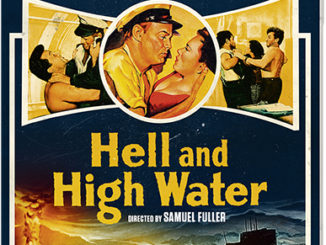
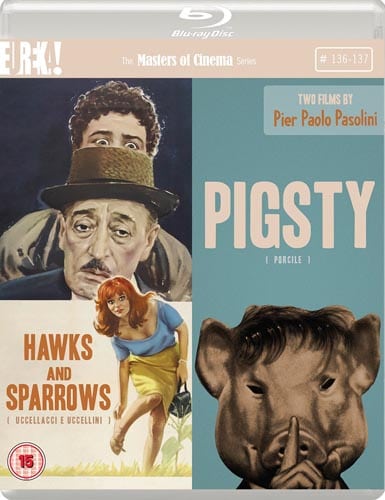

Be the first to comment